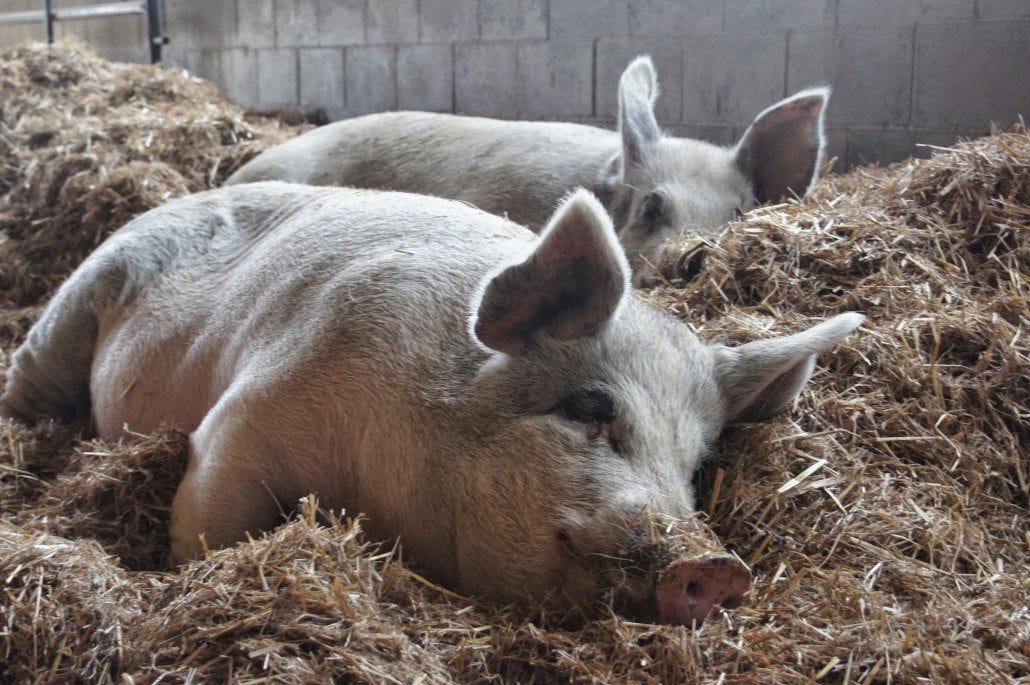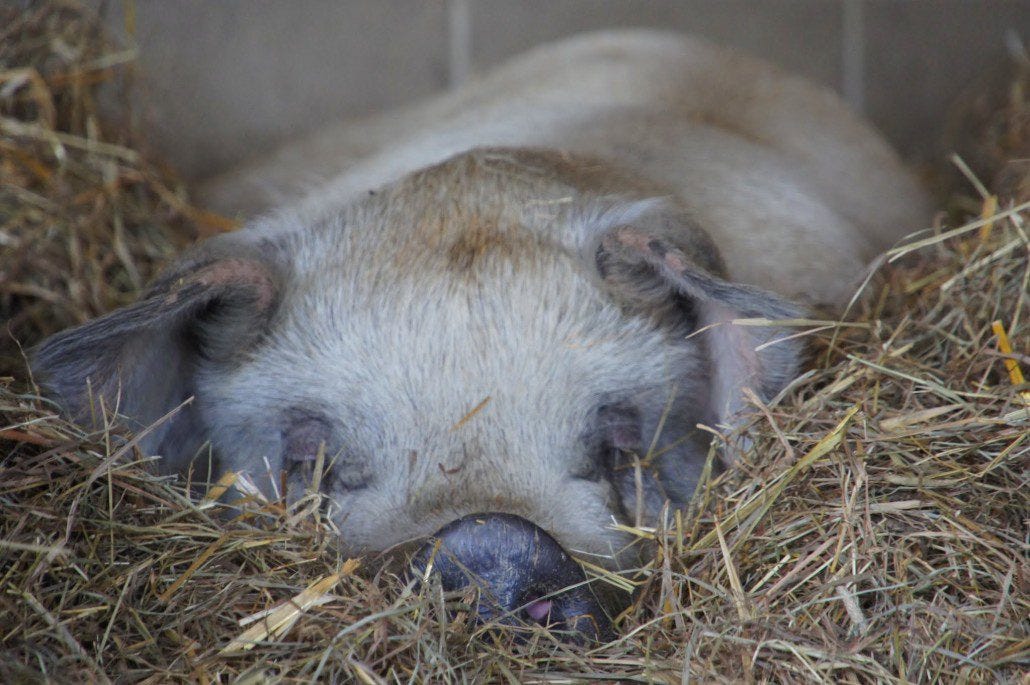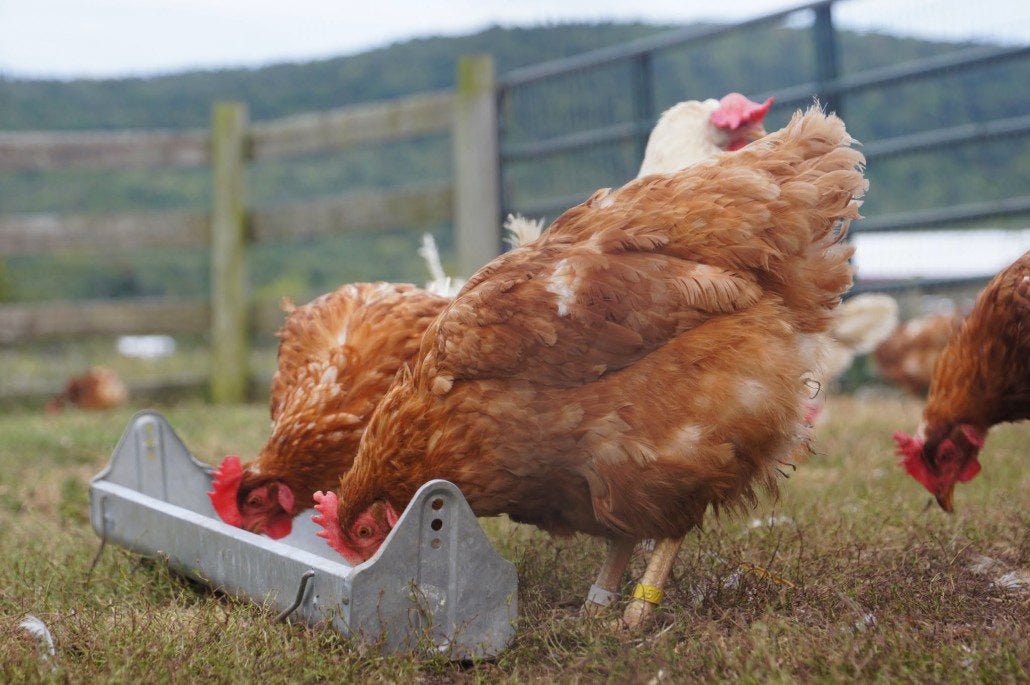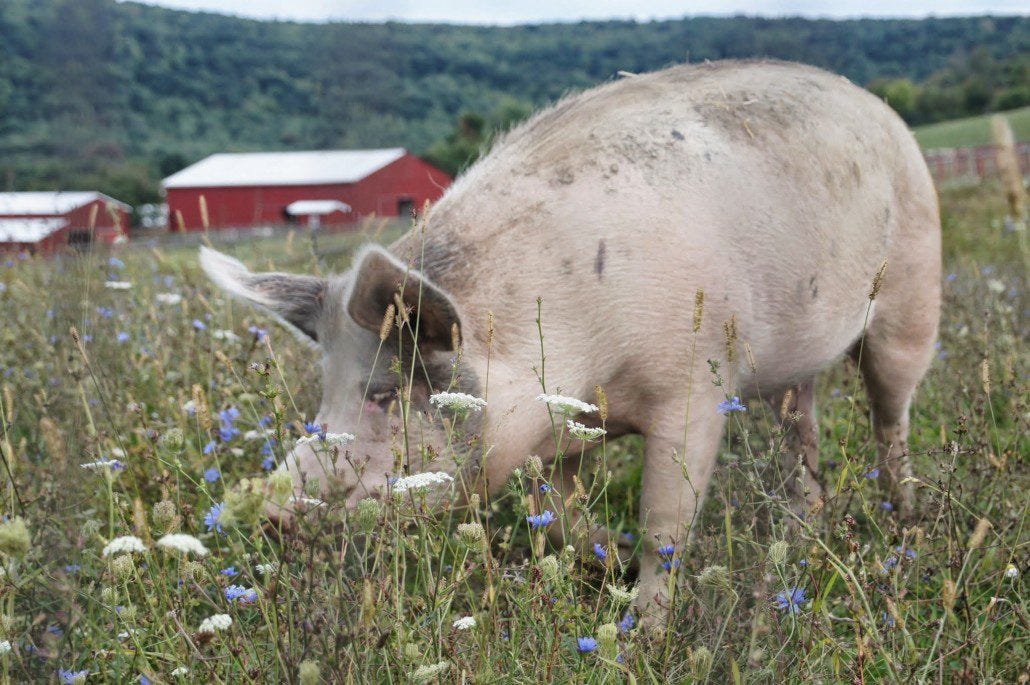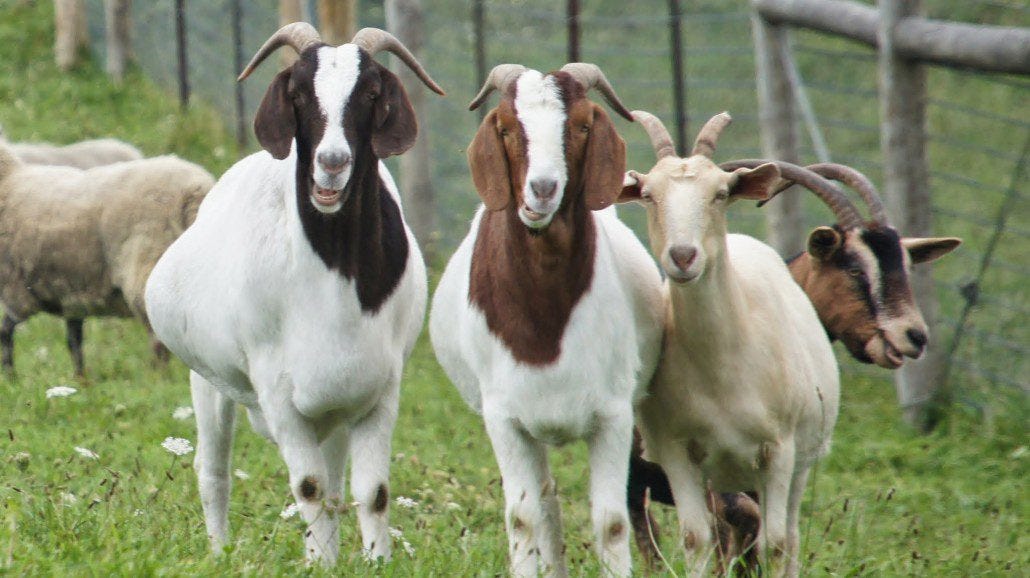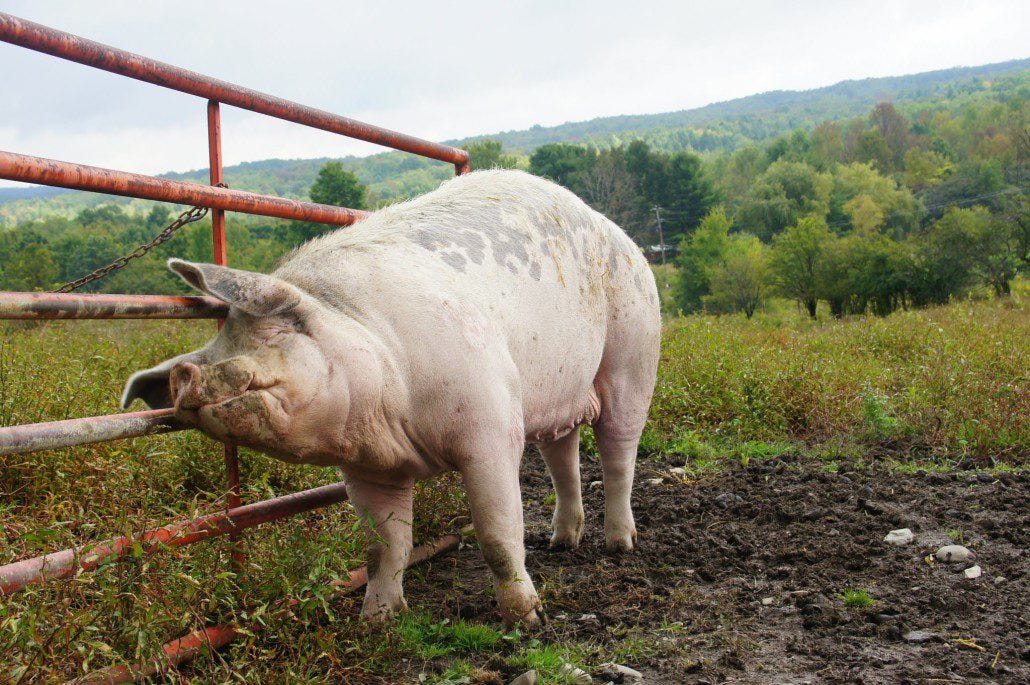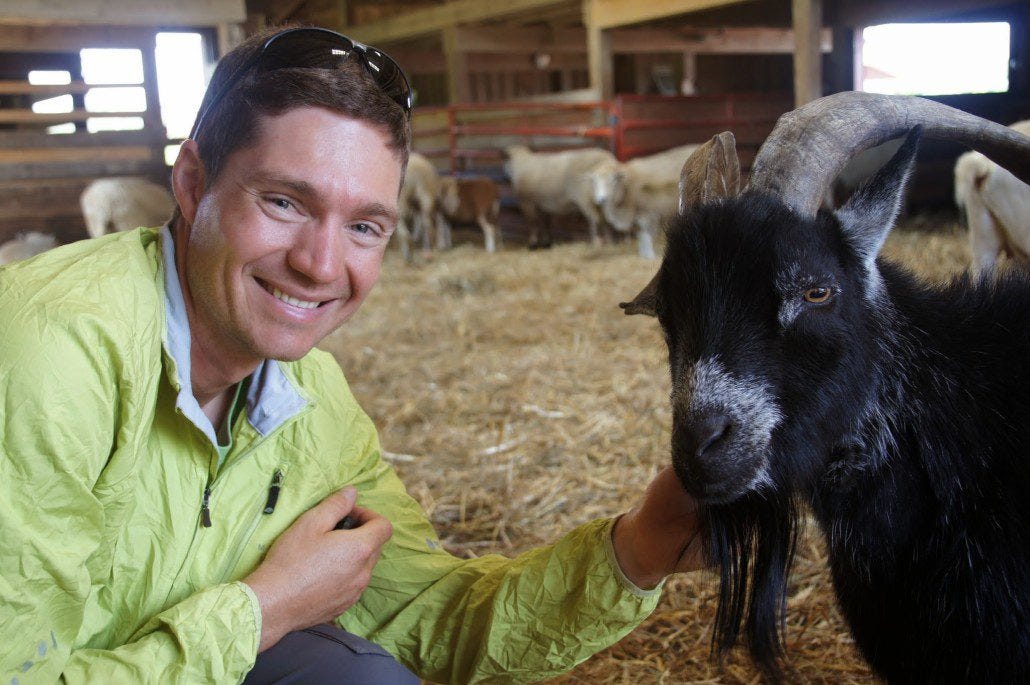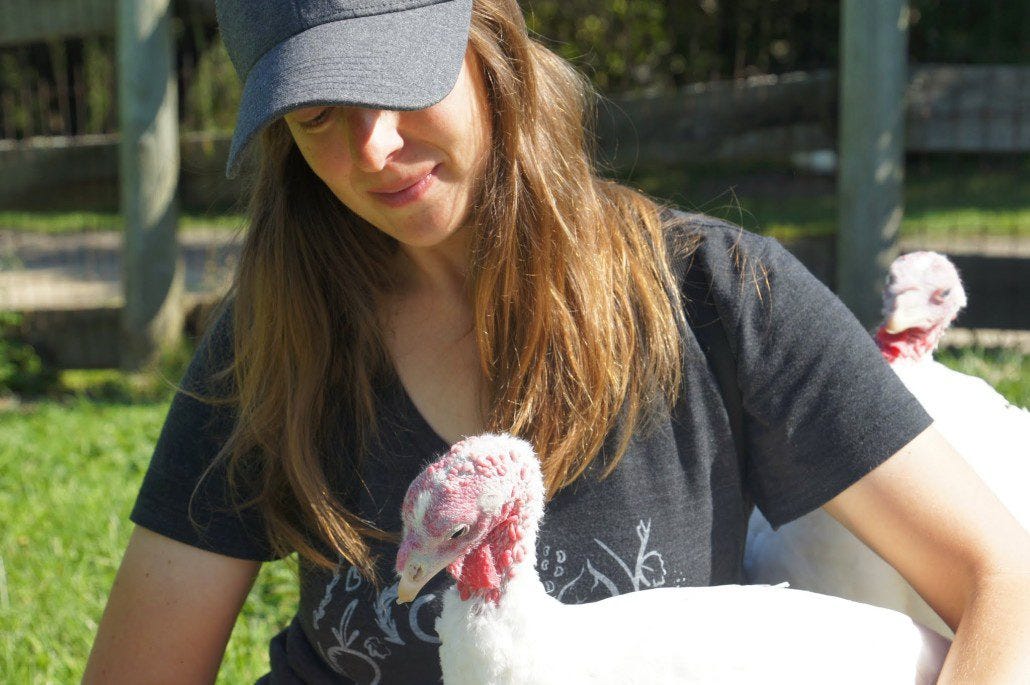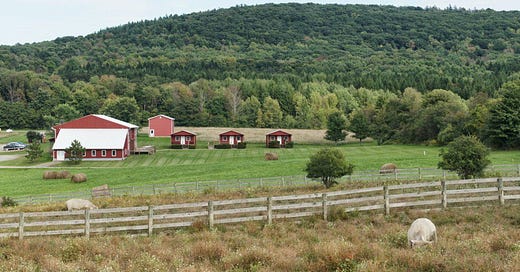
Waking Up at Farm Sanctuary
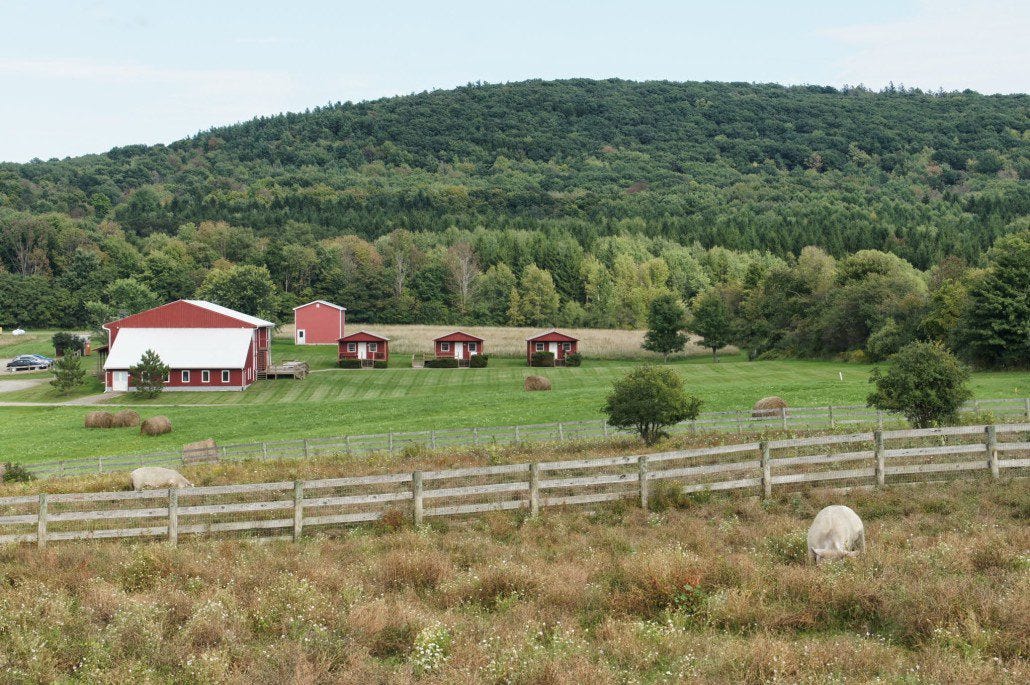
I found it impossible to avoid thinking about the source of our food while pedaling through a town in Iowa carpeted with downy feathers. The 20,000 turkeys a day killed there provide 80% of the turkey for Subway’s sandwich artists to slap into lunches. There is also no way to turn a blind eye when giant trucks packed with terrified cows buzz by on Nebraska highways, pulling into slaughterhouses while refrigerated trucks packed with meat disembark from the other side.
I’d never seen our food system up close and personal until we bicycled 4,000 miles across the U.S. last year. Not that I should be surprised: we live in a world where we are disconnected from our food and where the impact of our choices about what we eat is hidden. Starting in Montana and extending all the way to New York, a million pedal strokes took me past corn, soy and hay fields, most destined for animals in the feedlots we passed.
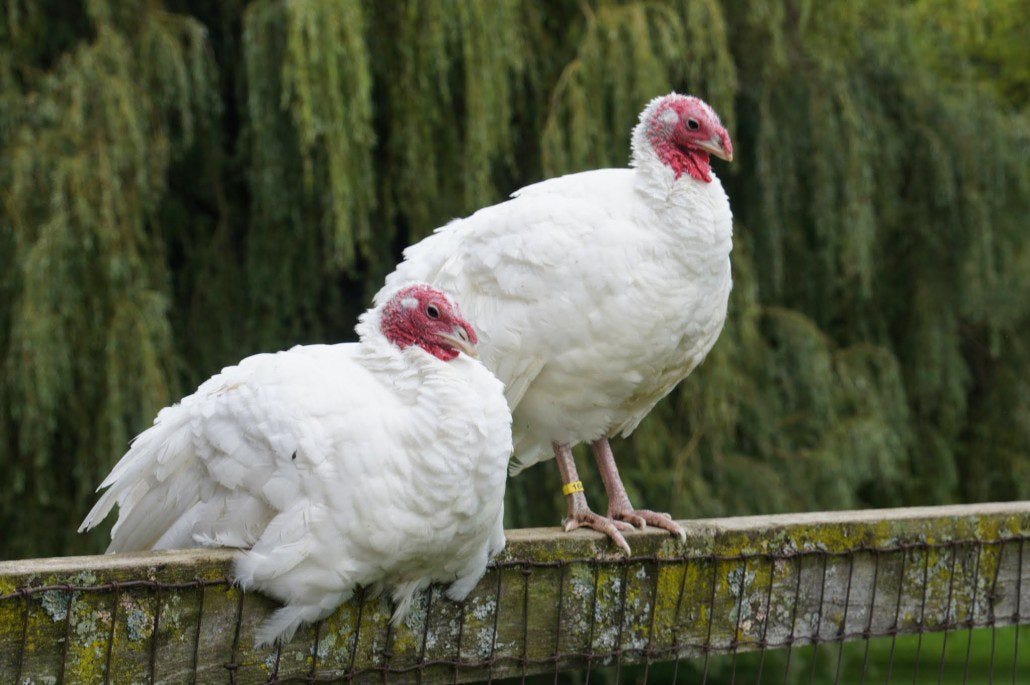
As part of our tour, we cranked out a 200 mile detour through the gorgeous Finger Lakes region of New York. The crystal lakes, carved by fitness-loving glaciers, feature terrain steeper than the price of a martini in Manhattan, and I worried my tongue would snag in my spokes while I panted uphill. It was all worth it. For three days, we rested in Farm Sanctuary’s picturesque red cabins and explored the property, hanging out with rescued farm animals. I didn't write about it then, but found inspiration after watching a recent The Daily Show interview with the sanctuary’s founder, Gene Baur, about his new book, Living the Farm Sanctuary Life.
Farm Sanctuary’s goal is to “protect farm animals from cruelty, inspire change in the way society views and treats farm animals, and promote compassionate vegan living.” With supporters like Ellen DeGeneres, Alicia Silverstone, and Biz Stone (co-founder of Twitter), the farm operates three different sanctuaries (one in NY, two in CA) and is the largest refuge for farm animals in the U.S. During our visit, we stayed on site, toured the farm, heard stories about the animals and their journey there, and watched happy, bouncy creatures enjoy the peaceful atmosphere, so different from their former lives.
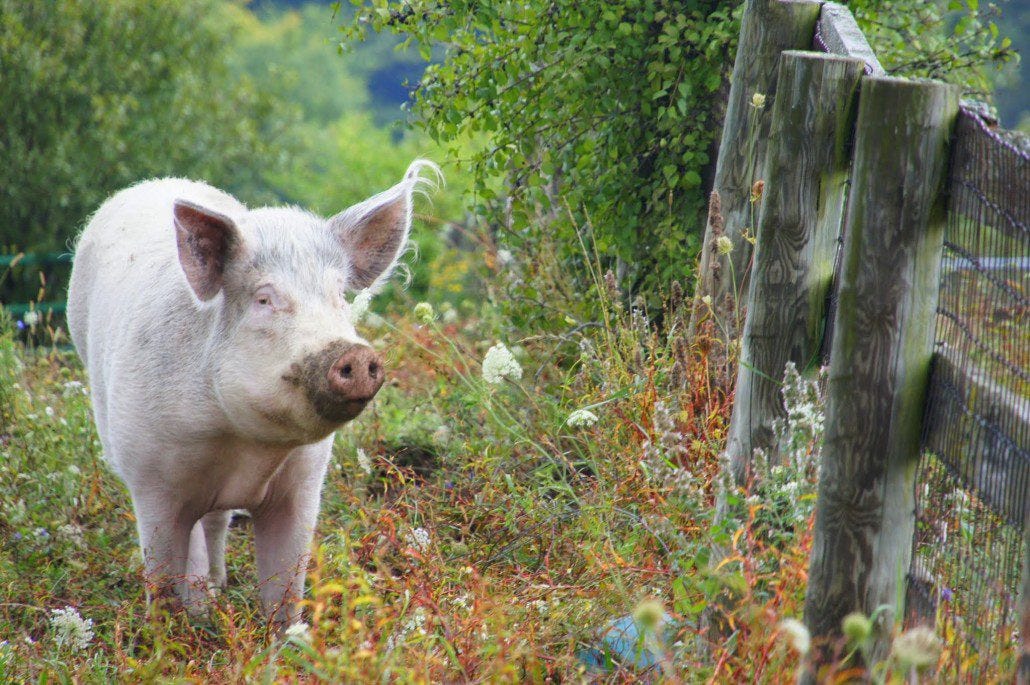
As Jon Stewart quipped in the interview, “It’s harder to eat meat when you know the animal’s name.” Farm Sanctuary matters because they put a face and a name to one of the billions of animals that are killed for food each year in this country. The goal is not to rescue each and every farm animal in the country. In the same way journalists focus on personal stories that are easier to connect to than overwhelming statistics (“12,000 people died today when a bomb exploded”), the farm showcases individual animals and their touching or heartbreaking stories.
For years, I found it easier to bury my head in the muck of animal feedlots rather than learn about the genesis of my food. The $4 Wendy’s lunch was my go-to in high school: two cheeseburgers, a large Frosty, and fries. Reading the books Fast Food Nation and The Omnivore's Dilemma in college pulled back the curtain on that ugly scene and killed my cravings for fast food … but I still ate meat. I came to veganism years later through badass athletes who were crushing barriers not in spite of being vegan, but because of it. Fierce UFC fighters like Mac Danzig, ultra-marathoners like Scott Jurek, and triathletes like Rich Roll, who did incredible feats like Epic 5 (five Ironman races - 2.4 mile swim, 112 mile bike, 26.2 mile run) in a week. Just typing that last sentence makes me tired. I figured that if they could push the limits of physicality, I could at least turn off cat videos on YouTube and learn more about being vegan.
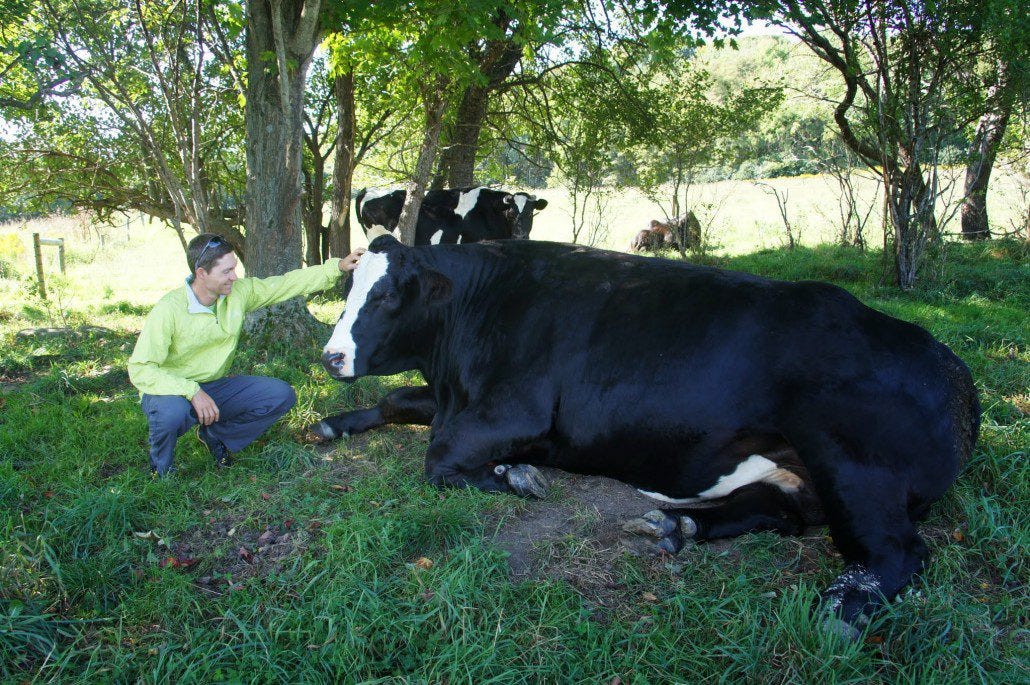
His name is Thunder. For good reason!
The engineer in me requires data before I make a lifestyle change; I can’t just accept claims made by others. To educate myself on a vegan lifestyle, I read reams of literature and watched videos of compiled and condensed research at NutritionFacts.org that challenged my deeply ingrained beliefs about food (two that surprised me: milk doesn’t always do the body good, and that we need more fiber, not protein). Transitioning my diet intimidated me until my friend Martin demonstrated that veganism is not about perfection. Instead, he showed me a middle path for adopting this change: rather than jumping in 100% overnight and disavowing all animal products, over the span of a year I cut out dairy milk, then pork and beef, and then all the rest of it in quick succession once I realized how healthy I felt. My persistently congested sinuses cleared, a lingering twinge in my knee finally went away, and I was pushing ever harder on the bike rides and trail runs I enjoy so much.
My path initially revolved around my personal health, not animal welfare. Once I cut out animal products, a strange thing happened - the walls I’d built to distance myself from the truth about using animals for food started to break down. I felt fit and strong, our friends were supporting our decisions without judgment, and restaurants provided amazing food catering to our requests. The final push to being an ethical as well as a dietary vegan was exposure to animal agriculture as we traversed the country on our bikes. The nose-curdling stench of feedlots, the glare of veal crates baking in the sun on dairy farms (I learned they take all the male calves away at birth), dropped a deep anchor of resolve within me to stick to a vegan lifestyle.
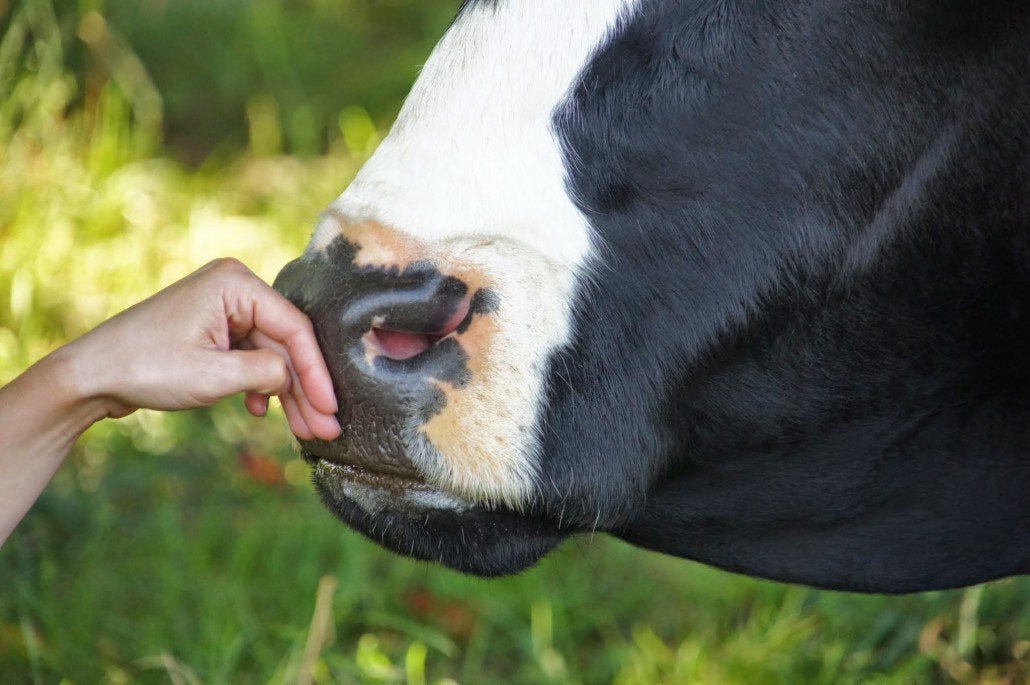
As Gene says, “this lifestyle is not about deprivation, it’s about living inspired.” Change is hard, and intentional inquest creates questions and doubt. However, unlike politics, where pivoting your stance on a topic ousts you from office as fast as sleeping with hookers, we regular folk can take in new information and update our beliefs without penalties, casting an important vote with our purchasing decisions. Why do you think there are so many plant-based alternatives out there these days? Consumer demand! You wouldn’t run the same operating system on your computer for 15 years (call me out, ye Luddites out there), and what’s wrong with opening yourself to new thought patterns to update your personal OS?
The process of diving into learning about animal agriculture and its impact on our health and the environment was eye-opening. When I questioned what a “sustainable," "humane” or “free-range” beef or egg operation meant, I learned there are inconsistencies and varying definitions. Watching documentaries like Cowspiracy or Forks Over Knives taught me about the dire environmental impacts of eating meat and the stunning health benefits of stopping.
I also discovered that tracking the money flow is a good way to see who the vested interests are in animal exploitation. The dairy industry is clearly biased when defending its practices, whereas I found it fascinating that the health insurance giant Kaiser is now recommending a plant-based diet for maximal health (the data convinced them it reduces insurance claims!). I’ve gifted friends the 30-day vegan challenge and seen them thrive. You can approach this topic from many directions, and being vegan isn’t about being perfect. It’s a process where it’s okay to dip your toe in and see how it feels.
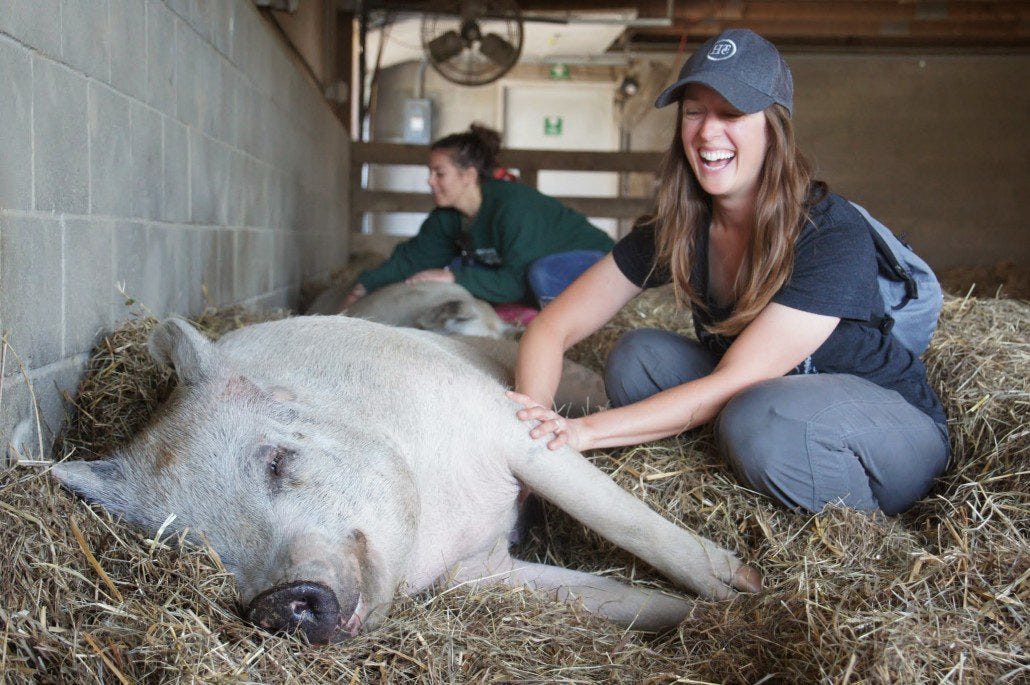
Ducking the truth about our animal-based food system is no longer something I can do. Farm Sanctuary taught me that farm animals want (and deserve) to live just as much as our cuddly cat Oliver or your beloved Frisbee-catching dog. A pig and a Boston terrier both want to thrive and feel love, and turkeys are so friendly they’ll follow you around and sit in your lap like a first grader meeting Santa. Because we can weigh in with our cold, hard cash, we consumers don’t need the government to create this change. With so many companies thriving by selling delicious alternatives to animal products, tasty restaurants opening all the time, books like Gene’s, podcasts like vegan athlete Rich Roll’s, and websites dedicated to helping us make educated choices, it is easy to decrease our reliance on animals.
I’ve found living a vegan lifestyle to be empowering beyond anything I expected, and encourage you to take an honest look at the source of your food and make sure it aligns with your beliefs. Look behind the curtain and see what’s there and how it makes you feel. I’ve found my visit to Farm Sanctuary to be a launch pad for living a more compassionate, thoughtful life, both toward animals and humans. And that is a gift worth pedaling up all those lung-searing hills in New York.
